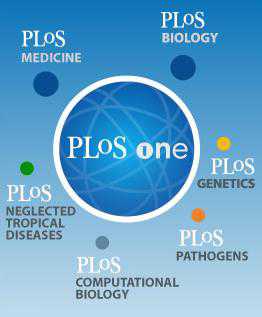PLoS ONE:左建平等青蒿素衍生物治疗系统性红斑狼疮研究再获进展
2012-03-23 MedSci MedSci原创
系统性红斑狼疮 (systemic lupus erythematosus, SLE)是自身免疫介导的、多系统累及的致死性自身免疫病。多年来,由于受病理机制复杂、治疗靶点缺乏、相关疾病动物模型周期过长等因素的制约,SLE治疗药物的研究进展缓慢。 中科院上海药物研究所左建平研究员课题组多年来致力于SLE治疗药物的研究,并取得了一定的研究成果。水溶性青蒿素衍生物SM934作为治疗SLE候选新药,
系统性红斑狼疮 (systemic lupus erythematosus, SLE)是自身免疫介导的、多系统累及的致死性自身免疫病。多年来,由于受病理机制复杂、治疗靶点缺乏、相关疾病动物模型周期过长等因素的制约,SLE治疗药物的研究进展缓慢。
中科院上海药物研究所左建平研究员课题组多年来致力于SLE治疗药物的研究,并取得了一定的研究成果。水溶性青蒿素衍生物SM934作为治疗SLE候选新药,在狼疮疾病动物模型(MRL/lpr品系雌性小鼠)实验中获得的研究结果曾在Arthritis & Rheumatism上发表,阐述了SM934的疗效作用及机制。
作为系列研究工作,课题组侯立飞博士和何世君等人最近证明了SM934在另一经典的自发性SLE疾病动物模型(NZB × NZW F1品系雌性小鼠)的实验治疗中,具有良好的疗效及新颖的免疫调节机制。研究结果显示,SM934的口服给药能显著改善NZB × NZW F1小鼠SLE相关症状和疾病进程,降低致死性狼疮肾炎的发生率,显著延长小鼠生存周期。
进一步的机制研究表明,SM934能诱导活化的病理性T细胞进入凋亡,增加调节性T细胞的比例,并能促进固有免疫细胞分泌免疫抑制性细胞因子IL-10。最新研究表明,IL-10在SLE疾病进程中依然是一个具有免疫抑制作用的调节性细胞因子,但其抑制作用将依赖于应答细胞的反应性。如果能运用药物干预等手段选择性地清除活化的致病性T细胞,促进T细胞的更新,将会使得IL-10的免疫抑制作用得到体现与增强,从而使免疫系统恢复稳态。
相关研究论文2012年3月在线发表于PLoS ONE。该项目得到了中科院、上海市科委和国家“十一五”重大专项等研究基金的资助。

doi:10.1371/journal.pone.0032424
SM934 Treated Lupus-Prone NZB×NZW F1 Mice by Enhancing Macrophage Interleukin-10 Production and Suppressing Pathogenic T Cell Development
Li-Fei Hou, Shi-Jun He, Xin Li, Chun-Ping Wan, Yang Yang, Xiao-Hui Zhang, Pei-Lan He, Yu Zhou, Feng-Hua Zhu, Yi-Fu Yang, Ying Li, Wei Tang, Jian-Ping Zuo
Background
Artemisinin and its derivatives were reported to possess strong regulatory effects on inflammation and autoimmune diseases. This study was designed to examine the therapeutic effects and underlying mechanisms of SM934, a water-soluble artemisinin analogue, on lupus-prone female NZB×NZW F1 mice.
Methodology/Principal Findings
NZB/W F1 mice were treated orally with SM934 for 3 or 6 months respectively to investigate the effect on clinical manifestations and immunological correlates. To further explore the mechanisms of SM934, ovalbumin (OVA)-immunized or interferon (IFN)-γ-elicited C57BL/6 mice were used. In vivo, treatment with SM934 for 3 or 6 months significantly delayed the progression of glomerulonephritis and increased the survival rate of NZB/W F1 mice. Clinical improvement was accompanied with decreased Th1-related anti-double-strand DNA (dsDNA) IgG2a and IgG3 Abs, serum interleukin (IL)-17, and increased Th2-related anti-dsDNA IgG1 Ab, serum IL-10 and IL-4. SM934 treatment also suppressed the accumulation of effector/memory T cells, induced the apoptosis of CD4+ T cells, while enhancing the development of regulatory T cells in NZB/W F1 mice. In addition, SM934 treatment promoted the IL-10 production of macrophages from NZB/W F1 mice, OVA-immunized C57BL/6 mice and IFN-γ-elicited C57BL/6 mice. In vitro, SM934 enhanced IL-10 production from primary macrophages stimulated with IFN-γ.
Conclusions/Significance
The results of this study demonstrated that artemisinin analogue SM934 had therapeutic effects on lupus-prone female NZB/W F1 mice by inhibiting the pathogenic helper T cell development and enhancing anti-inflammatory cytokine IL-10 production.
本网站所有内容来源注明为“梅斯医学”或“MedSci原创”的文字、图片和音视频资料,版权均属于梅斯医学所有。非经授权,任何媒体、网站或个人不得转载,授权转载时须注明来源为“梅斯医学”。其它来源的文章系转载文章,或“梅斯号”自媒体发布的文章,仅系出于传递更多信息之目的,本站仅负责审核内容合规,其内容不代表本站立场,本站不负责内容的准确性和版权。如果存在侵权、或不希望被转载的媒体或个人可与我们联系,我们将立即进行删除处理。
在此留言







#衍生物#
0
#系统性#
81
#Plos one#
79
#狼疮#
82
#红斑#
82